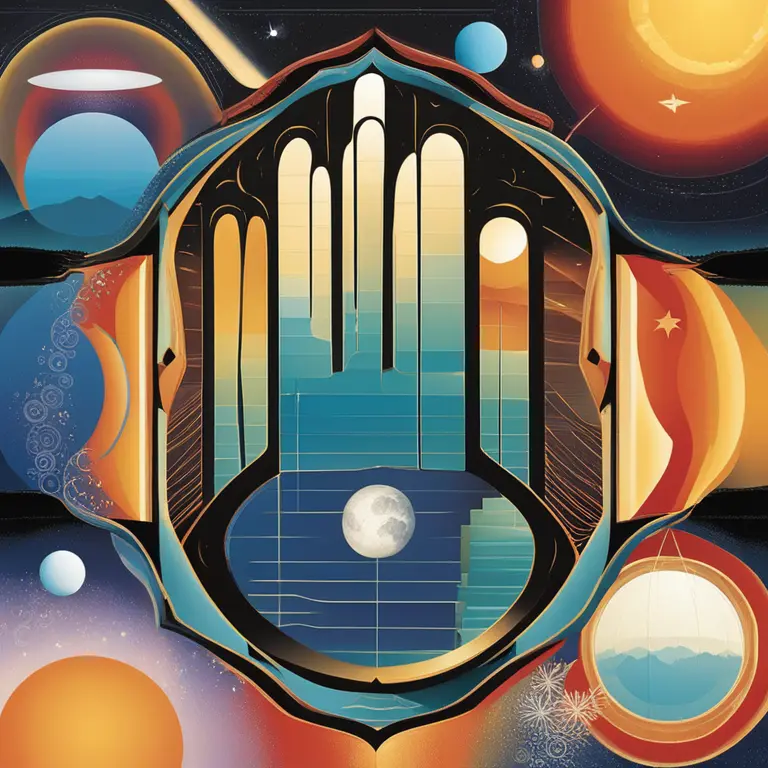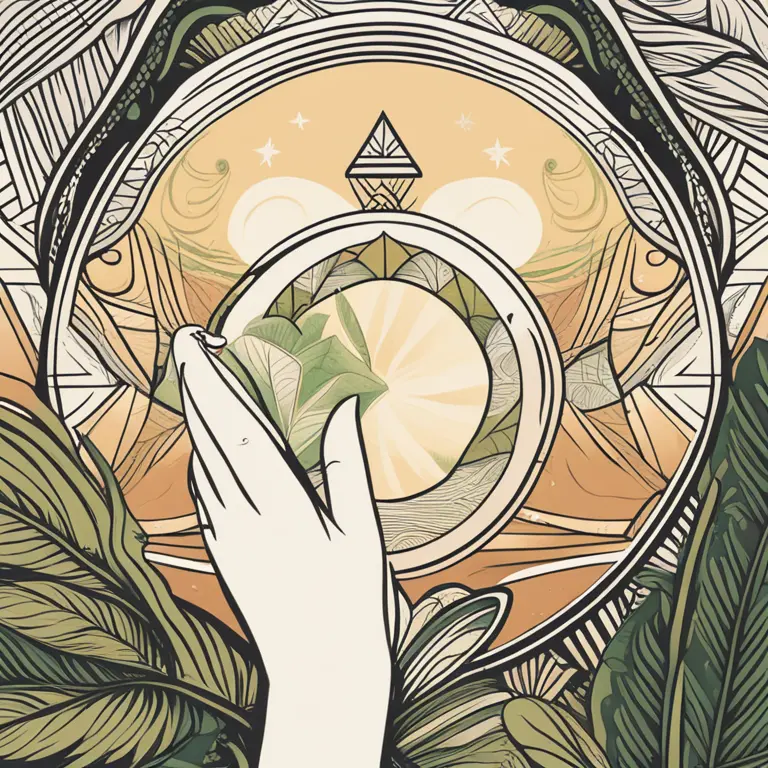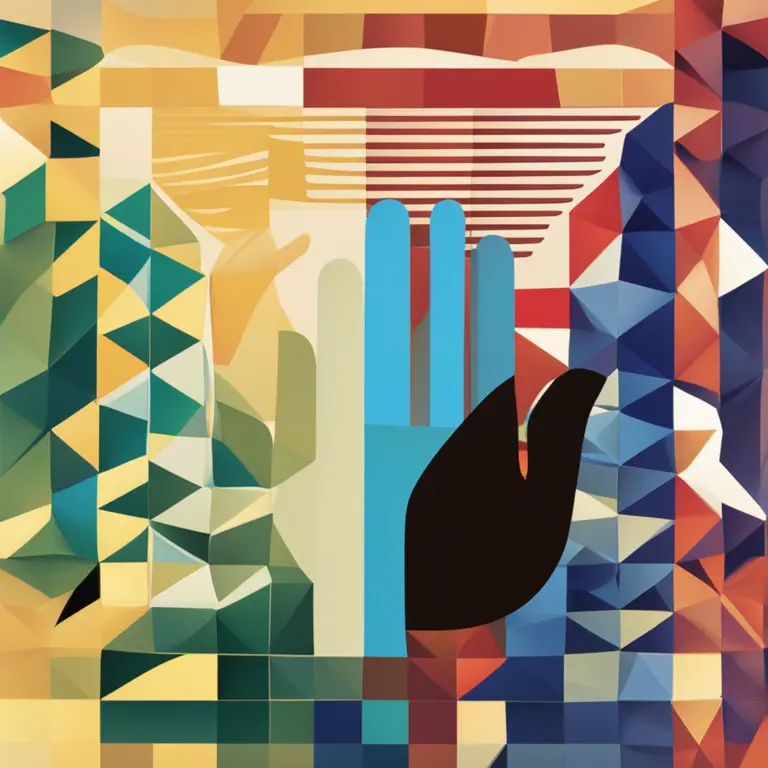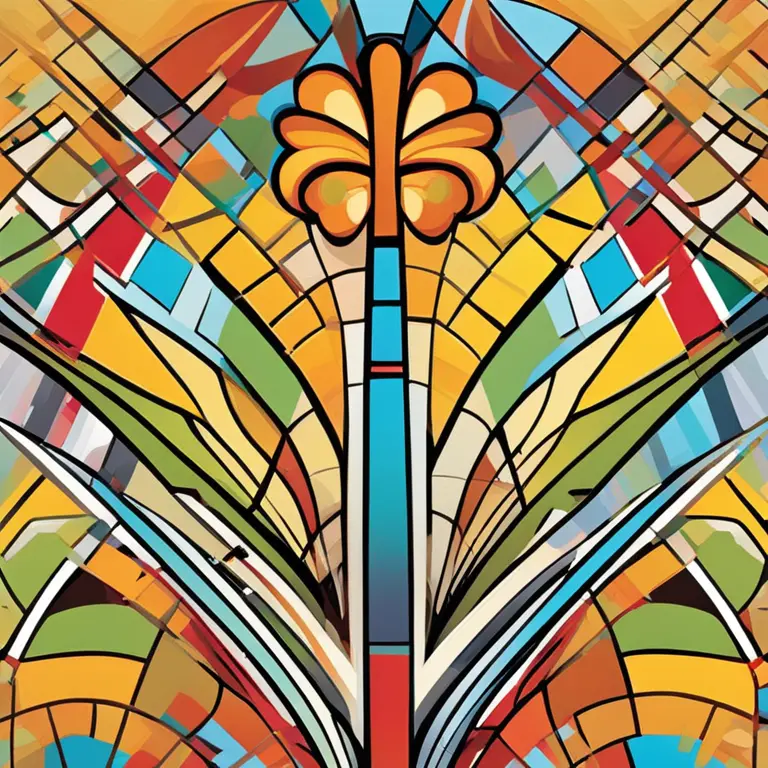
The Essentials of Palmistry Revealed
Dive into the fascinating practice of palmistry and learn how to analyze the lines and features of the hand revealing insights into character and destiny.
article by Nora Pennington
Introduction to Palmistry
Palmistry, or chiromancy, is an ancient art with roots winding through many cultures, believed to originate over 3,000 years ago in India. It has evolved through time, embracing elements of astrology and psychology. This mystical science posits that by examining a person's palms, one can glean significant insights into their personality traits, potential life paths, and even future experiences. Palmistry considers various aspects of the hand, including lines, mounts, shapes, and even finger lengths. As we venture into this guide, we'll explore these elements, offering you a window into the time-honored practice of hand analysis.

Lines of Life, Head, and Heart
The most prominent lines in palmistry are the life line, head line, and heart line. The life line reflects vitality, life changes, and major life events. Contrary to popular belief, it does not predict the length of one's life but rather its quality and richness. The head line signifies intellectual leanings, communication style, and thirst for knowledge. Meanwhile, the heart line unveils emotional constitution, expressing aspects of love and compassion. Analyzing these lines, their depths, lengths, and intersections can provide a narrative about an individual’s strengths and life experiences.

Significance of Hand Shapes
In palmistry, hand shapes are associated with elemental classifications such as earth, air, fire, and water, each revealing distinct personality traits. Earth hands are identified by broad, square palms and fingers, indicating practicality and stability. Air hands feature square or rectangular palms with long fingers, often tied to sociability and intellectualism. Fire hands have shorter fingers and square or rectangular palms, denoting enthusiasm and leadership. Water hands present long, oval palms with long, flexible fingers, symbolizing intuition and emotional depth. Deducing hand shape is pivotal in forming a foundational understanding of an individual’s inherent nature.

Mounts in Focus
The mounts of the palm reside at the base of each finger and are named after the celestial bodies, correlating with various traits. For instance, the Mount of Venus, located at the base of the thumb, is associated with love and sensuality. The Mount of Jupiter under the index finger indicates ambition and leadership, while the Mount of Saturn beneath the middle finger reflects a propensity for wisdom and duty. The Sun Mount under the ring finger embodies creativity and success, and the Mount of Mercury under the little finger illustrates communicative abilities. Analyzing the prominence and features of these mounts can reveal a multitude of personality characteristics and potentialities.

Finger Length and Flexibility
The length and flexibility of one's fingers offer additional personal insights in palmistry. Longer fingers may indicate a detail-oriented and patient nature, whereas shorter fingers could suggest quick thinking and action-oriented behavior. Flexibility in fingers can denote adaptability and openness to change, while stiffer fingers might reveal a more resolute and determined character. It's not merely the fingers in isolation but their proportion to one another and the palm that completes the interpretive process, adding another layer of depth to the art of hand analysis.
Modern Palmistry Perspective
As we move through 2024 and beyond, palmistry adapts with the times, integrating contemporary psychological insights with traditional methodologies. While once considered purely mystical, today it is often seen as a tool for reflection and self-understanding, rather than a definitive science. It’s also increasingly used in conjunction with other personality assessment tools, providing a holistic view of an individual's traits, choices, and potential future paths. This broader and more nuanced interpretation ensures palmistry's enduring relevance in our modern era of personal growth and self-discovery.
Palmistry's Place in Today's World
In our fast-paced digital age, the personal touch of palmistry offers a form of connection and introspection that is often lost amidst the noise. People are seeking ways to reconnect with themselves and unlock insights that lie beyond the visible. As a practice that requires no technology, merely the human touch and the eyes of a practiced reader, palmistry brings an element of the personal and the timeless into our modern world. As we continue to navigate the complexities of existence, the art of palmistry stands as a testament to the enduring quest for knowledge and self-awareness.
Published: 1/11/2024
Modified: 1/12/2024
More predictions
Come back here soon to learn more about yourself and your future


Can Palmistry Predict Your Path Incorrectly?
Delving into the accuracy of palm readings, this article examines whether palmistry can lead to incorrect predictions about one's life and destiny.


The Ancient Art of Vedic Palmistry
Discover the ancient art of Vedic Palmistry and its practice in the modern era, revealing the secrets held within the lines of the hand.


Palmistry Basics: How to Read Your Hand's Secrets
Learn the basics of palmistry with this guide on how to read the lines and shapes of your hands to reveal insights about your personality and future.